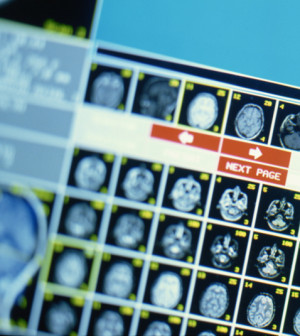- Double Mastectomy May Offer No Survival Benefit to Women With Breast Cancer
- Toxic Lead Found in Cinnamon Product, FDA Says
- Certain Abbott Blood Sugar Monitors May Give Incorrect Readings
- Athletes Can Expect High Ozone, Pollen Counts for Paris Olympics
- Fake Oxycontin Pills Widespread and Potentially Deadly: Report
- Shingles Vaccine Could Lower Dementia Risk
- Your Odds for Accidental Gun Death Rise Greatly in Certain States
- Kids From Poorer Families Less Likely to Survive Cancer
- Tough Workouts Won’t Trigger Cardiac Arrest in Folks With Long QT Syndrome
- At-Home Colon Cancer Test Can Save Lives
Health Highlights: Jan. 13, 2014


Here are some of the latest health and medical news developments, compiled by the editors of HealthDay:
Nine Womb Transplant Patients Doing Well: Swedish Researchers
Nine women who received transplanted wombs donated by relatives are doing well and will soon try to become pregnant, according to the doctor leading the groundbreaking project.
Two previous attempts at womb transplants in Turkey and Saudi Arabia were not successful in enabling women to have babies.
“This is a new kind of surgery,” Dr. Mats Brannstrom, chair of the obstetrics and gynecology department at the University of Gothenburg, told the Associated Press. “We have no textbook to look at.”
Many of the nine women who received the womb transplants had their periods six weeks after the transplants, an indication that their wombs are healthy and functioning. The first of the transplants was conducted in September 2012. All of the women left hospital within days after transplant surgery.
The women in the project were born without a uterus or had it removed after being diagnosed with cervical cancer. Most of them are in their 30s. The donors included mothers and other female relatives of the recipients, the AP reported.
The recipients’ transplanted uteruses were not connected to the fallopian tubes, so they can’t get pregnant naturally. But all of the women have their own ovaries and their eggs were used to create embryos through in-vitro fertilization. The doctors plan to transfer the women’s frozen embryos into their new wombs.
Next month, Brannstrom and colleagues will host the first-ever workshop on how to perform this type of womb transplant and plan to publish a scientific paper on their project. Brannstrom said that the transplants might not result in babies but felt optimistic.
“This is a research study,” he told the AP. “It could lead to (the women) having children, but there are no guarantees … what is certain is that they are making a contribution to science.”
The use of live donors for uterus transplants is somewhat controversial. Doctors in Britain who are planning to perform uterus transplants will only use wombs from dying or dead women.
This was the approach used by doctors in Turkey last year. That patient conceived but the pregnancy failed after two months. The first uterus transplant was performed in Saudi Arabia in 2000, using a live donor. The transplanted uterus had to be removed after three months due to a blood clot, the AP reported.
—–
‘Teen Mom’ Shows May Have Cut Teen Pregnancy Rate: Study
Two television series that follow teen girls through pregnancy, delivery and early motherhood may have prevented more than 20,000 births to American teens in 2010, according to a new study.
It concluded that “16 and Pregnant” and a spinoff called “Teen Mom” reduced the U.S. teen birth rate by nearly six percent, The New York Times reported. The study was to be released Monday by the National Bureau of Economic Research.
The programs are among MTV’s most-watched programs. Each episode of “16 and Pregnant” follows a different teen as she goes through pregnancy, birth and the first few weeks of motherhood, while “Teen Mom” continues the stories of the young mothers and their children.
By stressing the consequences of unprotected sex, educating teens about the difficulties of having a child, and prompting discussions about birth control and pregnancy, the shows seemed to have reduced the teenage birth rate, according to the study by Melissa Kearney, the director of the Hamilton Project, a research group in Washington, and Phillip Levine of Wellesley College.
“It’s thrilling,” Sarah Brown, the chief executive of the nonprofit National Campaign to Prevent Teen and Unplanned Pregnancy, told The Times. “People just don’t understand how influential media is in the lives of young people.”
Kathryn Edin, a poverty researcher at Harvard University, said the shows may help teens overcome “don’t ask, don’t tell” situations where they don’t talk with each other about their expectations. This lack of communication can lead to unintended pregnancies.
“Families born by accident, rather than design, are bad for men, bad for women and really bad for kids,” Edin told The Times.
But the shows have critics.
“Only 40 percent of teenage mothers ever graduate high school; two-thirds of families begun by an unmarried teen mother are poor,” said a review of the program by the Media Research Center, a conservative organization. “So what does MTV do? It shows how cool teen pregnancy is with a new reality series.”
Copyright © 2024 HealthDay. All rights reserved.










